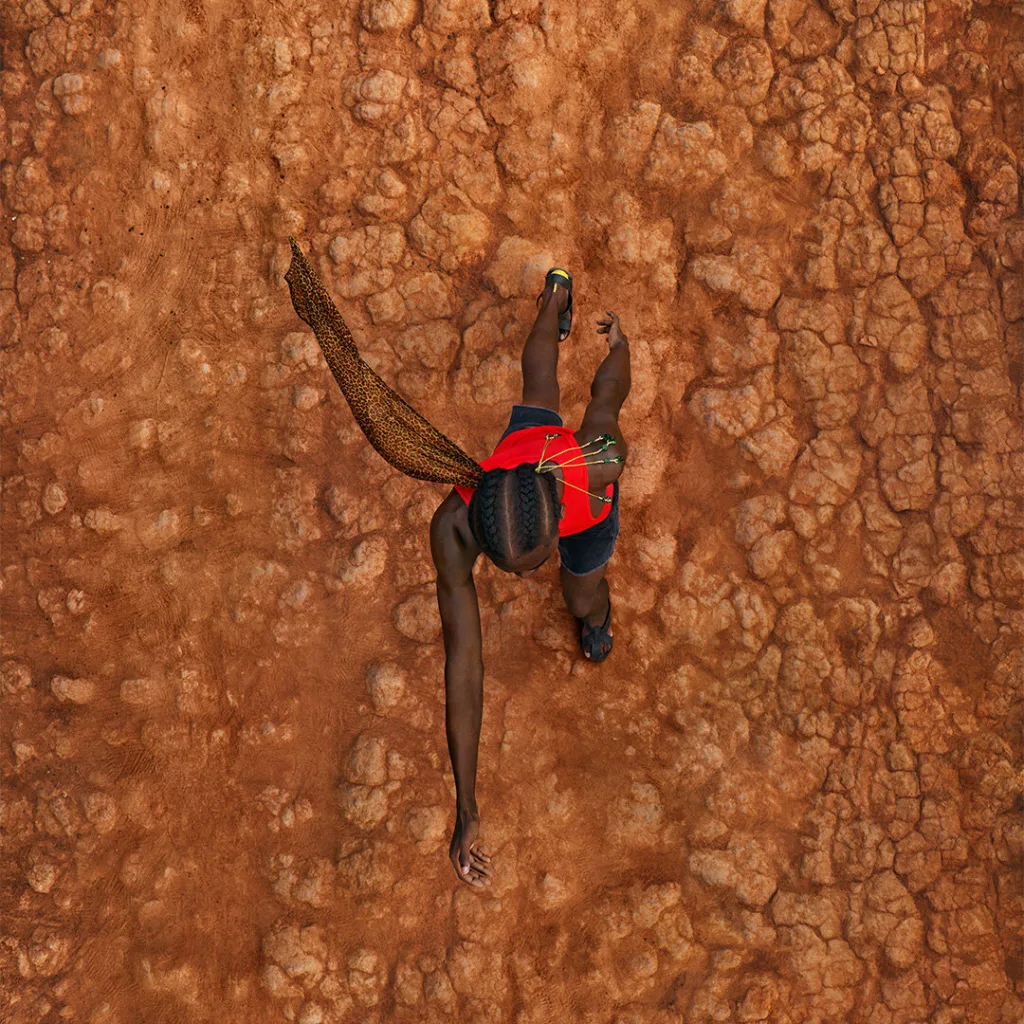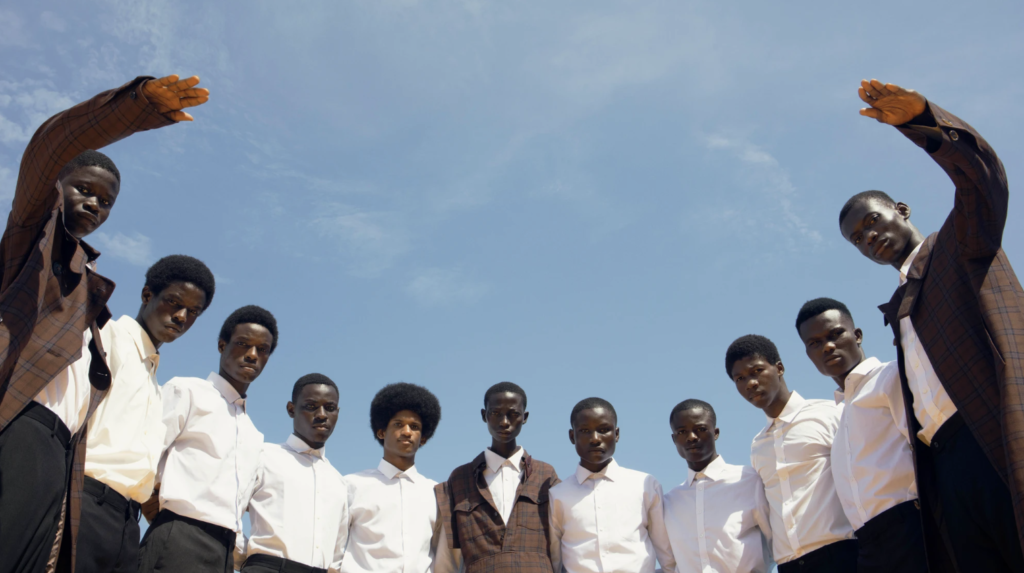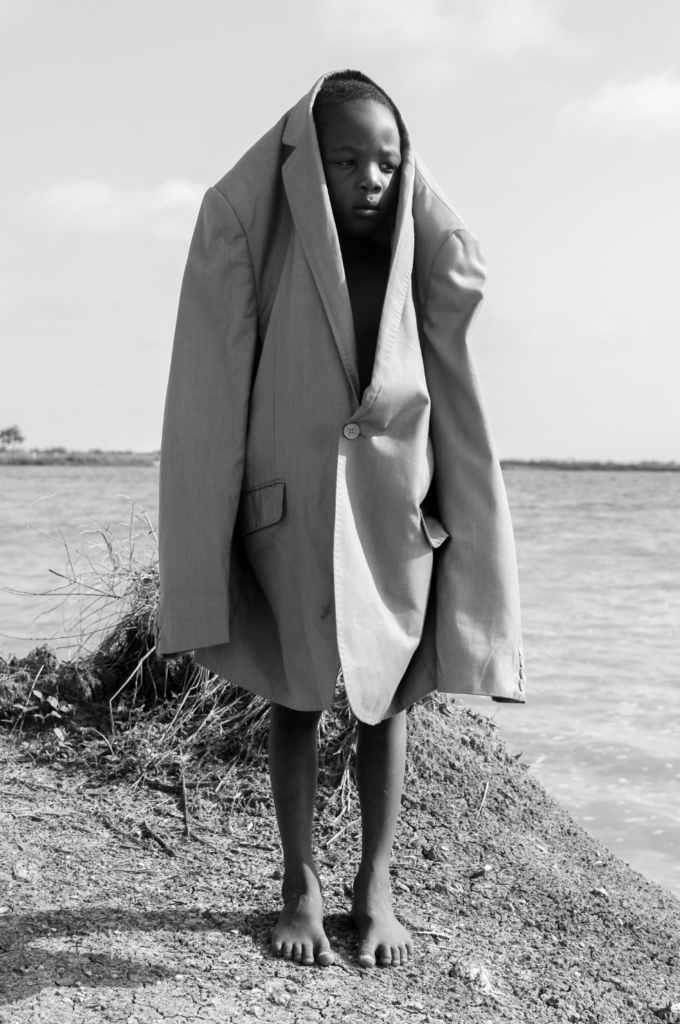As the contemporary art scene in Africa continues to boom, Ghana serves as one of the countries leading the charge. With that in mind, Richmond Orland Mensah immortalizes the artists’ voices with the launch of the publication; VOICES: Ghana’s Artists in Their Own Words.
Richmond Orlando Mensah is the founder and artistic director of the Pan-African digital portal MANJU Journal, which is based in Accra and celebrates modern-day Africa and the diaspora at the nexus of art, fashion, and culture.

A.S: Could you share with us the inspiration behind creating “VOICES: Ghana’s Artists in Their Own Words”?
R.O.M: The publishers TwentyFour ThirtySix approached us with the idea of collaborating on a book about Ghana. During lockdown, they had noticed how many creatives and artists they followed on social media posted the Ghanaian flag in their bio, and then also how many Ghanaians were leading London’s creative scene including Edward Enninful, Ozwald Boateng and Ekow Eshun.
It’s obviously something we’ve been aware of as well, so we loved this idea, but the scope felt daunting. During our initial discussions we decided to focus solely on visual artists rather than also include the equally exciting worlds of Ghanaian fashion and music. At the moment Ghana’s arts is really having its moment internationally and that is something worth celebrating and shouting about.

Photography by Kwabena Sekyi Appiah-Nti
A.S: How did you go about picking the artists to be included in the book? What did you consider during the selection process?
R.O.M: Well, first of all they are all amazing Ghanaian artists working either in the country or as part of the global diaspora. It’s important to point out that there are no artist profiles in this book – we interviewed everyone and so the book is the artists in their own words, which for a group art book is pretty unique. So the second thing they have in common is that they all agreed to talk to us! This demonstrates that they were interested in helping us document what they are all collectively creating, which is indicative of the community spirit amongst them. You’ve really never seen such a wide ranging group of artists who have a sense of community. Of helping, promoting and supporting each other. It’s the opposite of competitiveness; it’s togetherness.
We were mindful to feature a diverse selection of artists, from newly graduated painters to the wonderful 94-year old photographer, James Barnor and pioneering artist Ablade Glover. And not just painters and photographers – it was important to acknowledge the great variety of visual artists in Ghana and the diaspora including textile designers, ceramicists, sculptors and filmmakers.

Image courtesy of TwentyFour ThirtySix
A.S: The point of allowing artists to speak about their work in their own words is a unique approach. How do you believe this approach increases the readers’ understanding of the Ghanaian art scene and the artists’ creative journies?
R.O.M: Our book is a first person account, there’s no outsider gaze or viewpoint. We really wanted the artists themselves to freely express what inspires them as a community and what goes into their work. We interviewed every artist, curator and gallerist (over 80 of them) either in person or online which for an anthology of artbook is very unique. The approach to this is to make readers understand what is currently going on in Ghana’s art community through the artists own words (those collectively making this scene more vibrant).
A.S: Could you share how the spirit of collaboration and support has been advantageous to the artistic landscape in Ghana?
R.O.M: The sense of community is very unique in the current creative scene in Ghana. During early interviews with majority of the artists, it was really interesting to see how each artist was inspired by other fellow artists one way or the other. This really cemented the essence of what this artbook is truly about. It is about learning from each artist and exploring our country’s creativity: the art that is being made, the conversations that are being had, the exhibitions that are being shown, the ideas and togetherness that we all share.
A.S: Ghana’s art scene is one of the most vibrant in Africa. In your own words, what factors have contributed to this artistic vibrancy and growth within the contemporary art world?
R.O.M: An amalgamation of reasons honestly. Though Ghana’s art scene has always been vibrant but now getting its recognition, attention and appreciation, many factors have contributed to the sudden increase and growth of the artistic and creative scene in the country. One of them being the Year of Return initiative by the government bringing together the global African diaspora to the country to explore and get in touch with their roots. Other reasons include the increasing racial awareness and greater appreciation of African culture in the West. We as Ghanaians are just lucky enough to have a constellation of people who are willing to put the work in, and who are passionate and dedicated enough to do it. However, challenges persist, and continued & collective efforts are still needed to support and promote the arts scene in Ghana.

Image courtesy of Show Studio
A.S: What role do you see the book playing in promoting a greater understanding of and acceptance for contemporary African art?
R.O.M: We are spotlighting what I believe to be Africa’s most vibrant arts scene, and therefore it is seen internationally as the vanguard. We are a small country but our cultural and creative output is really impressive. For us, the book is another small step in making art from Africa mainstream. We would like this book to be a great introduction to what’s happening in Ghana but also importantly in Africa. While this book focuses on Ghana’s art scene and creative community, we really hope that it will encourage people to explore more contemporary African artists, galleries and curators. We would love this book to help push modern African art and creativity from being othered to being completely mainstream. It’s a total celebration of a very beautiful time and community.
A.S: You are someone deeply connected to the Ghanaian art scene, how do you see the future of the Ghanaian art community?
R.O.M: I believe the future of Ghana’s art scene is very positive. The art scene is thriving and I’m very hopeful to see more institutional change and support. It’s important to see how young, up and coming artists and newly graduated students are now taking art as a full-time job or profession unlike before. The newly established galleries, institutions and art residencies like the Nubuke Foundation, Noldor Artist Residency, Gallery 1957 and the Dot Ateliers by artist Amoako Boafo among others are all collectively supporting and nurturing the next generation of Ghanaian artists. Even though the landscape is changing, there is still a lot to do to offer necessary infrastructural support.
For updates, follow Manju Journal on Instagram. The book is available for purchase, here.


